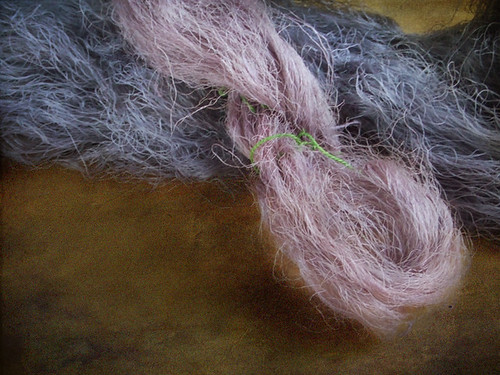this is very exciting, let me share it with you.
yesterday Dick Huset posted something on the natural dyes list about gromwell and shifting the blue by adding an acid. i had noticed the alcohol extraction liquid was very red, but when water was added it turned blue.i was going to try some after mordanting to shift colors when the dyeing was completed, but let's face it, as i have a scant supply of shikon i was scared to f***up.
i cut a lime in half dashed outside and dunked it in the dye tub where there was some silk peacefully soaking.voila! it started shifting towards the red almost immediately. here is the mystery behind what i saw in japan as murasaki dyed . all those deep reddish purples.
the skein at the background of the photo goes towards the blue because it was soaked in ash lye water. on its third dip now the color is less gray than on the second dip and more let's say glowing form inside out for want of a better term. the foreground skein has been dipped twice, the second time in the acidulated dyebath.
-digression and rant- GRRRR! between google and microsoft they are trying hard to impoverish the language. acidulated is counted as wrong in ms spellcheck. if you don't use the words google likes it ignores you and you don't get indexed. GRRRR!
back to dyeing. the reddish skein went back to the dye tub and will stay there until the dye exhausts.
i still have some dyestuff soaking in alcohol and will use it for the textured silk which coincidentally i was aiming at getting reddish purple.
250 knots already tied to the dummy warp, working on the mokume this afternoon. life is good.
neki desu

